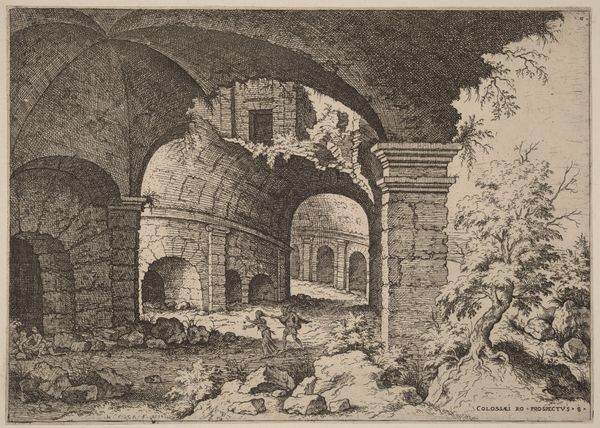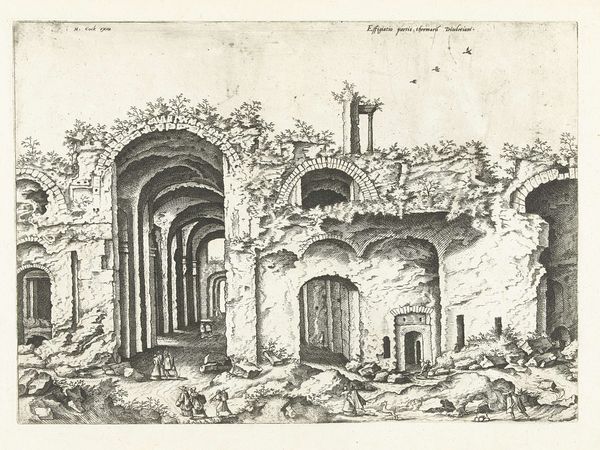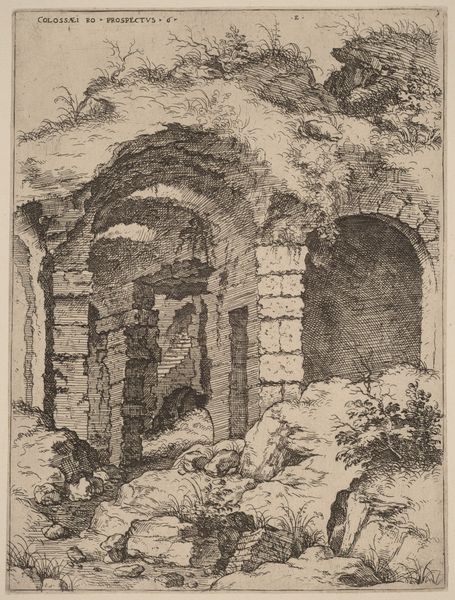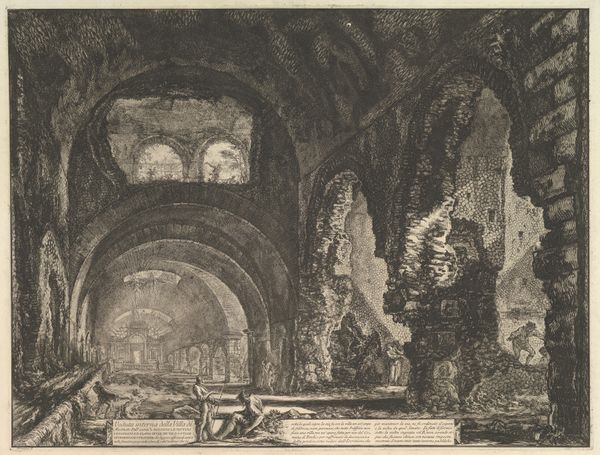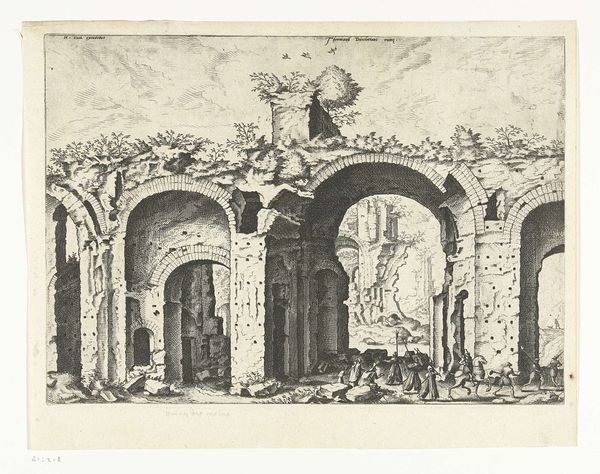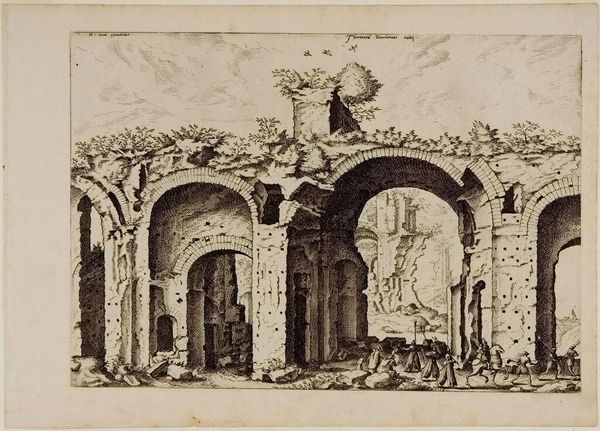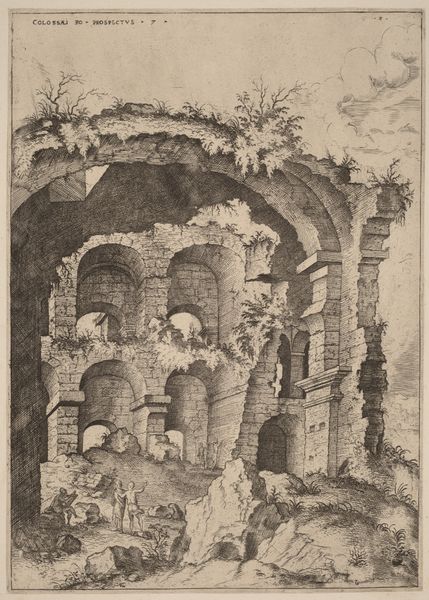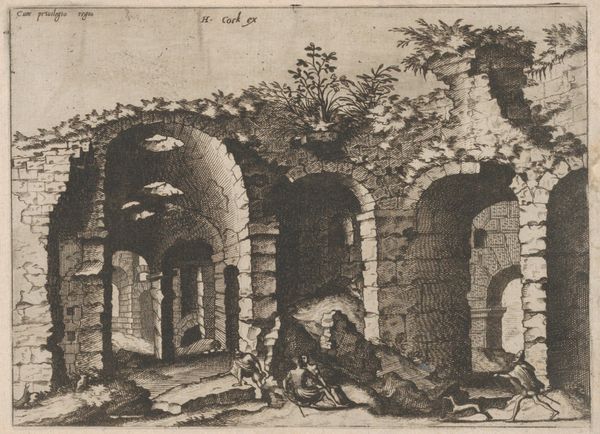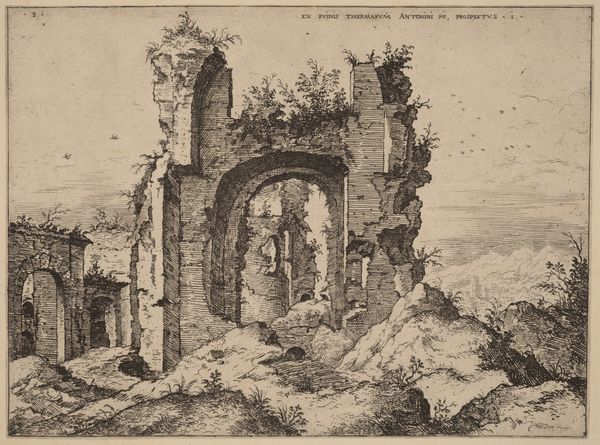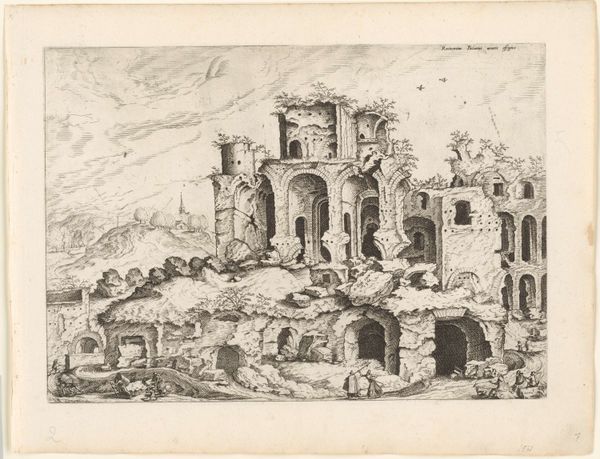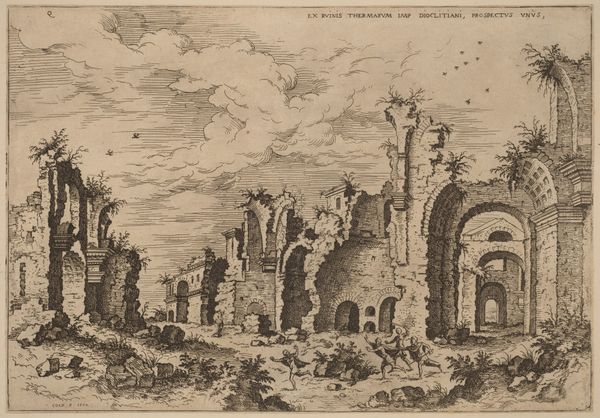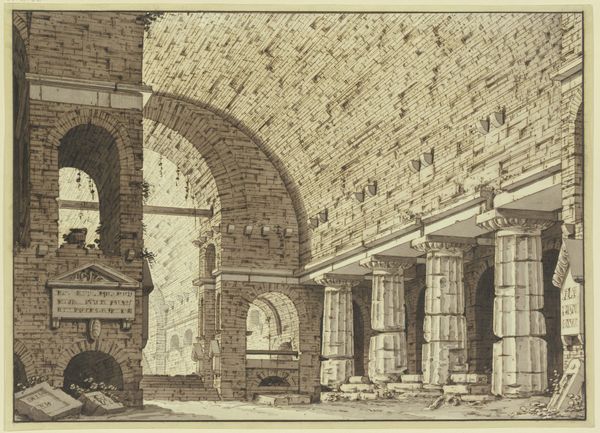
Barrel Vault with Coffering from the series Roman Ruins and Buildings 1562
0:00
0:00
drawing, print, etching, architecture
#
drawing
# print
#
etching
#
landscape
#
11_renaissance
#
history-painting
#
architecture
Dimensions: Sheet: 6 15/16 × 9 5/8 in. (17.7 × 24.4 cm)
Copyright: Public Domain
Curator: Looking at this etching, "Barrel Vault with Coffering from the series Roman Ruins and Buildings," created in 1562 by Johannes van Doetecum I, one immediately confronts the enduring allure of antiquity. Editor: My initial reaction is the sheer melancholic weight of it all. That collapsing archway overgrown with foliage... It evokes the impermanence of even the grandest human endeavors. Curator: Indeed. The artist provides not just a depiction of Roman architecture but also, perhaps more crucially, a social commentary on the fall of empires and the transience of power. Notice the figures in the foreground – they seem insignificant against the scale of the ruin. Editor: Those figures are key. The ruin speaks volumes. The barrel vault, with its repeating coffered pattern, normally symbolic of Roman order and control, is fractured, reclaimed by nature. It serves as a stark memento mori, echoing across the centuries the futility of human hubris. I’m particularly struck by the plant life emerging from the stonework—new life from old. Curator: Precisely! And this wasn’t merely a detached observation; the 16th century witnessed growing interest among artists and scholars in reconstructing Rome's past, influencing contemporary architecture and civic identity. The print medium made these ruins widely accessible, disseminating ideas about classical forms throughout Europe and sparking various appropriations and adaptations. Editor: So, through those detailed, decaying forms, we grasp cultural memory itself: not only Rome's power, but what happens after—the reclaiming forces of nature. It’s a complex weave, connecting past grandeur to a present grappling with it. One is almost reminded of the vanity paintings that later became popular. Curator: It’s an important reminder that images like these were instrumental in shaping perceptions of history, memory, and power at a specific moment in European intellectual and artistic development. The visual rhetoric of the print underscored a particularly politicized narrative about what was lost and what could be revived from the past. Editor: Yes, a potent mix. It’s an exploration not just of architectural ruin, but the symbolic landscape of cultural heritage itself. And those tenacious plants whispering hope within it all.
Comments
No comments
Be the first to comment and join the conversation on the ultimate creative platform.
